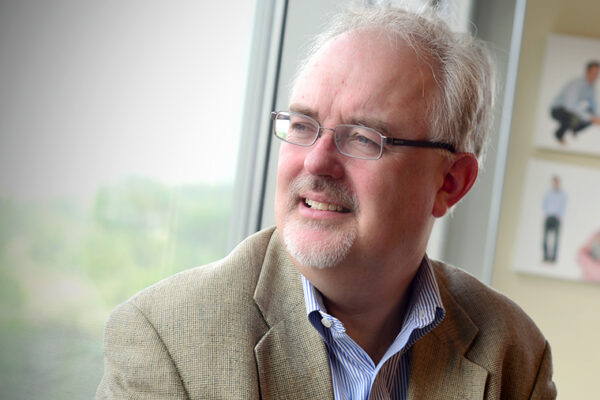Construction workers are at high risk of injury. Worse, they risk losing their jobs if they take time off for repeated medical and physical therapy appointments.
To keep working while coping with chronic pain so often experienced in their field, construction workers are more likely than average to become addicted to opioids, studies indicate. They compose one of the populations most affected by the United States’ prescription and illicit opioid epidemic, according to Ann Marie Dale, associate professor of medicine at Washington University School of Medicine in St. Louis.
To tackle this issue, Dale will develop and test over the next three years methods to reduce opioid use and misuse among working-age people, primarily focusing on the construction industry. Dale’s project, funded by the National Institutes of Health (NIH), is one of several projects that are part of the new Washington University Healthy Work Center.
Formerly known as the Occupational Safety and Health Research Lab, the center facilitates research to promote the health of working-age people by focusing on topics such as healthy diet and exercise, cancer prevention and injury avoidance. The center then aims to share the information with employers and worker groups such as trade unions. The new center is a rebooted version of the initial project but with more of a focus on healthy workplaces.
By interviewing employers, legal experts and medical insurers, Dale and her research team at the Healthy Work Center hope to better understand what employers can do to protect their workers from opioid addiction and how the team can leverage resources from other areas to help employees. For example, the center might advise employers to expand employees’ insurance coverage to include physical and cognitive behavioral therapy aimed at providing pain relief. These therapies would offer an alternative to prescriptions for painkillers.
“Instead of focusing only on the harmful aspects of work, such as injuries and dangerous exposures to chemicals, we want to encourage a more holistic approach to health,” said Bradley A. Evanoff, MD, the Richard A. and Elizabeth Henby Sutter Professor of Occupational, Industrial and Environmental Medicine, who co-directs the center with Dale. “Our goal is to bring together Washington University faculty interested in improving healthy behaviors and to facilitate collaborations between researchers, employers and worker groups.”
The center also is coordinating a study, called “Working for You,” that is evaluating how best to modify workplaces to help low-wage employees lose weight and lower their risk of diabetes. Although research has shown that intensive lifestyle interventions at work can help people lose weight and lower their chances of developing diabetes, reaching low-wage employees has proven challenging. Working rotating shifts makes it harder for people to exercise, and healthy food isn’t always accessible on overnight shifts.
Evanoff and Dale worked with Graham Colditz, DrPh, MD, the Niess-Gain Professor of Surgery; Richard Stein, associate professor of medicine; and Rachel Tabak, research associate professor at the Brown School, to design a two-year trial assessing weight loss in workplace groups at BJC HealthCare and Washington University. Small volunteer teams within each group designed weight loss and exercise interventions for the entire group. Some of the interventions created by the volunteer teams included exercise competitions, office carts with healthy snacks, and departmental health screenings. Additionally, each employee with a body mass index (BMI) of more than 30 was offered tailored text messages four to five times a week geared toward helping him or her lose weight. These weight-loss results will be compared to those of similar workplace groups that received no interventions.
“Working for You is a great example of diverse researchers on our campus collaborating to address how we sometimes need to change workplace structure to help people live healthier lives,” Dale said. “We hope this and other research in our center will bring more people to the table, including academics, community organizations and employers, to improve the health of working-age people for years to come.”



